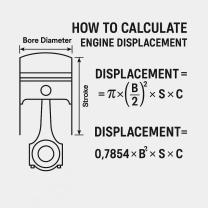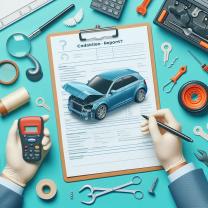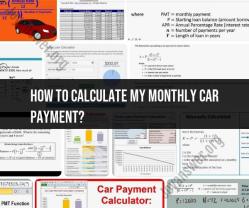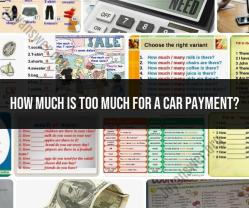How to buy an used car from a dealer?
Buying a used car from a dealer involves several steps to ensure that you make an informed decision and get a reliable vehicle. Here is a comprehensive guide to help you through the process:
1. Research:
- Know Your Budget: Determine how much you can afford to spend on a used car, considering not just the purchase price but also taxes, registration, insurance, and potential repairs.
- Define Your Needs: Identify the type of car that suits your lifestyle and needs. Consider factors like size, fuel efficiency, and features.
2. Find Reputable Dealers:
- Research and identify reputable dealerships in your area. Look for customer reviews and ratings to gauge their reputation.
3. Check Vehicle History:
- Obtain the Vehicle Identification Number (VIN) from the dealer and use it to obtain a vehicle history report through services like Carfax or AutoCheck. This report can reveal important information about the car's past, including accidents and title issues.
4. Inspect the Car:
- Physically inspect the car or have a trusted mechanic do so. Check for signs of wear, rust, or damage. Test drive the car to evaluate its performance.
5. Ask Questions:
- Inquire about the car's maintenance history, previous ownership, and any known issues. Ask for service records and if the car has undergone any recent repairs.
6. Negotiate the Price:
- Research the fair market value of the specific make and model you're interested in. Use this information to negotiate the price with the dealer. Be prepared to walk away if the price doesn't meet your expectations.
7. Review Warranty Options:
- Understand the warranty options available for the used car. Some dealerships offer certified pre-owned (CPO) programs that provide additional warranty coverage.
8. Finalize the Sale:
- Once you've agreed on a price, review and understand the terms of the sale. Carefully read the contract and make sure you understand all fees, taxes, and warranty details.
9. Secure Financing:
- If you need financing, explore your options before visiting the dealership. Compare interest rates from banks, credit unions, and the dealership itself. Be aware of your credit score.
10. Complete the Paperwork:
- Ensure that all necessary paperwork is completed accurately. This includes the bill of sale, title transfer, and any financing documents. Verify that the VIN on the paperwork matches the VIN on the car.
11. Take Delivery:
- Before taking delivery, do a final walkthrough of the car to ensure it meets your expectations. Confirm that all agreed-upon repairs or conditions have been addressed.
12. Register and Insure:
- Complete the necessary steps to register the car in your name and obtain insurance coverage. Check your state's specific requirements for vehicle registration.
13. Keep Records:
- Keep all paperwork related to the purchase, including the bill of sale, title, and warranty information. These documents may be needed for future reference or if you decide to sell the car.
14. Follow Up:
- Follow up with the dealership if you encounter any issues after the purchase. Some dealerships offer limited warranties or return policies, so be aware of the terms.
Remember to approach the process with patience, diligence, and a willingness to walk away if the deal doesn't feel right. Being well-informed and conducting thorough research will help you make a more confident decision when purchasing a used car from a dealer.
What steps should one follow when purchasing a used car from a dealership?
Buying a used car from a dealership can be a daunting task, but it doesn't have to be. By following these steps, you can make sure you're getting a good deal on a quality car.
1. Do your research.
Before you even start shopping, take some time to research the type of car you want and what a fair price would be. You can use online resources like Kelley Blue Book and Edmunds to get an idea of what cars are selling for in your area.
2. Get pre-approved for a loan.
This will give you a better idea of what you can afford and will help you negotiate a better deal with the dealership.
3. Shop around.
Don't just go to the first dealership you see. Get quotes from several different dealerships to compare prices.
4. Inspect the car carefully.
Take the car for a test drive and make sure everything is working properly. Be sure to check the tires, brakes, and lights.
5. Get the car inspected by a mechanic.
This is especially important if you're buying a car that's not under warranty. A mechanic can check for any hidden problems.
6. Negotiate the price.
Once you've found a car you like, don't be afraid to negotiate the price. Have the research you've done ready to back you up.
7. Read the paperwork carefully before you sign anything.
Make sure you understand all of the terms and conditions.
8. Get the car insured.
Don't drive the car off the lot without having insurance in place.
Here are some additional tips for buying a used car from a dealership:
Be patient. Don't feel pressured to buy a car right away. Take your time and find the right car for you.
Don't be afraid to walk away. If you're not happy with the deal, don't be afraid to walk away from the negotiation. There are plenty of other cars out there.
Ask for a CARFAX report. This report will show you the car's history, including any accidents or repairs.
Get everything in writing. Once you've agreed on a price, make sure you get everything in writing. This will help you protect yourself if there are any problems with the car down the road.












